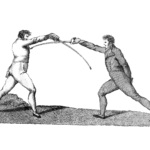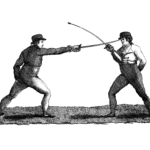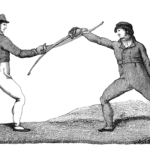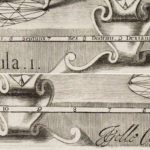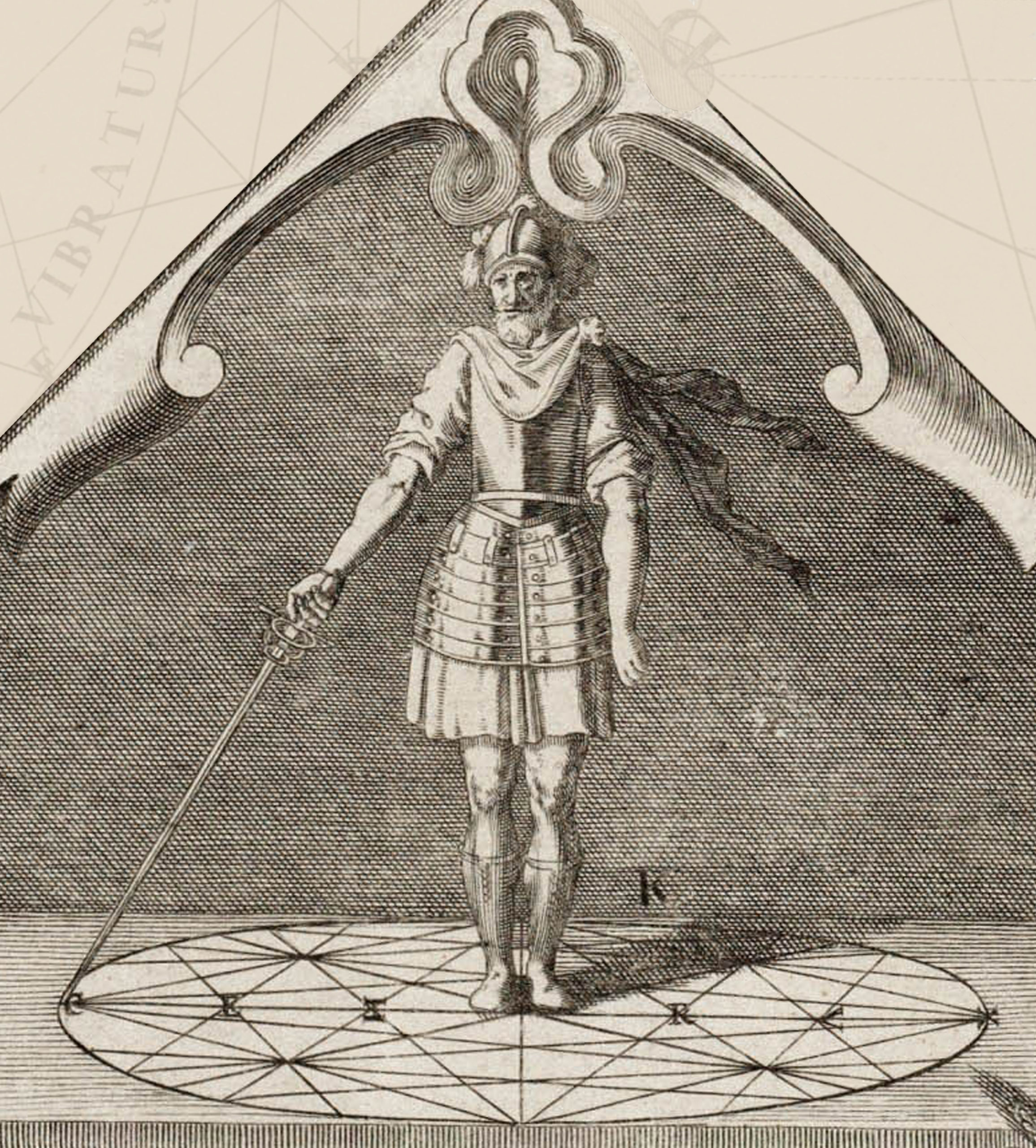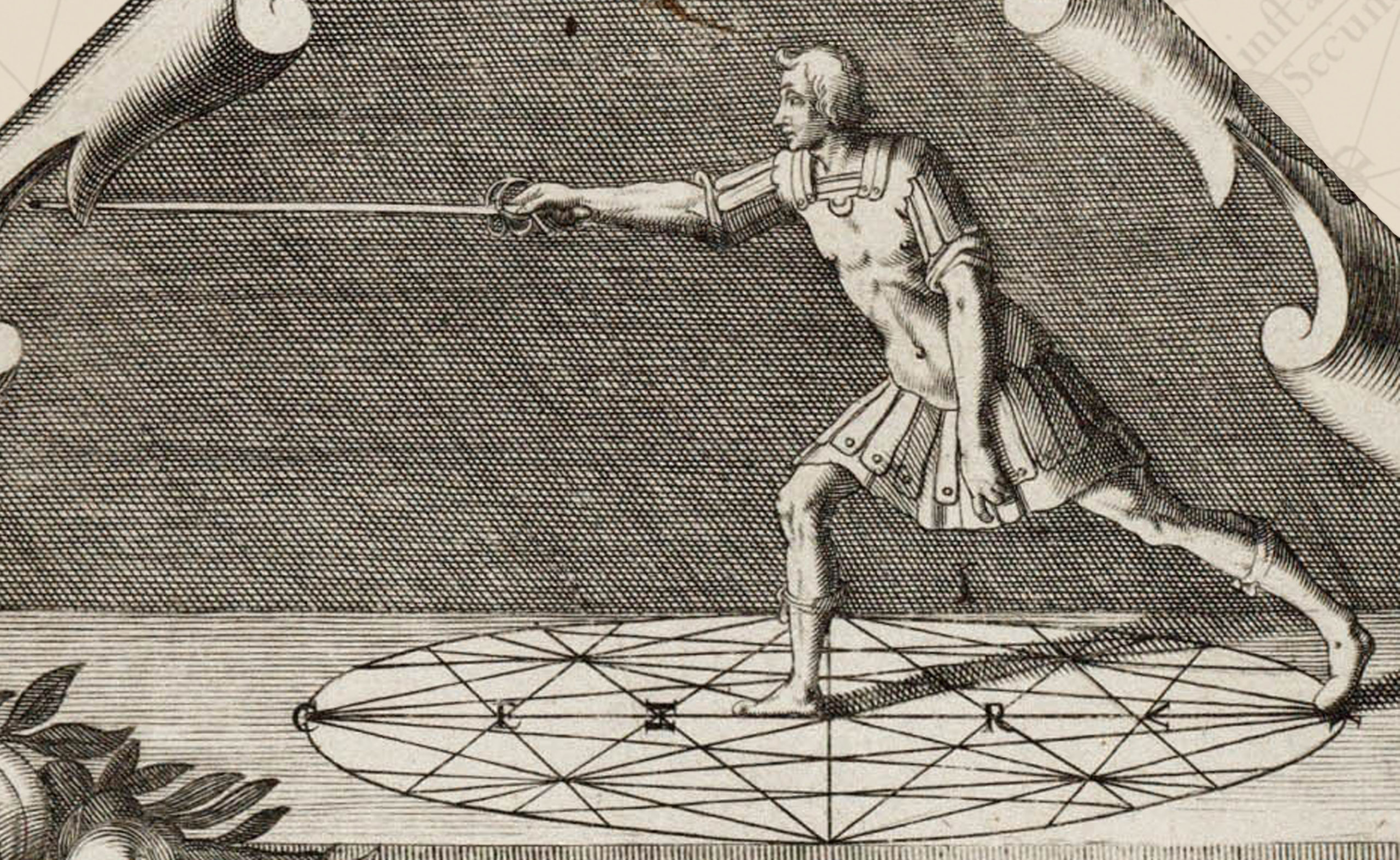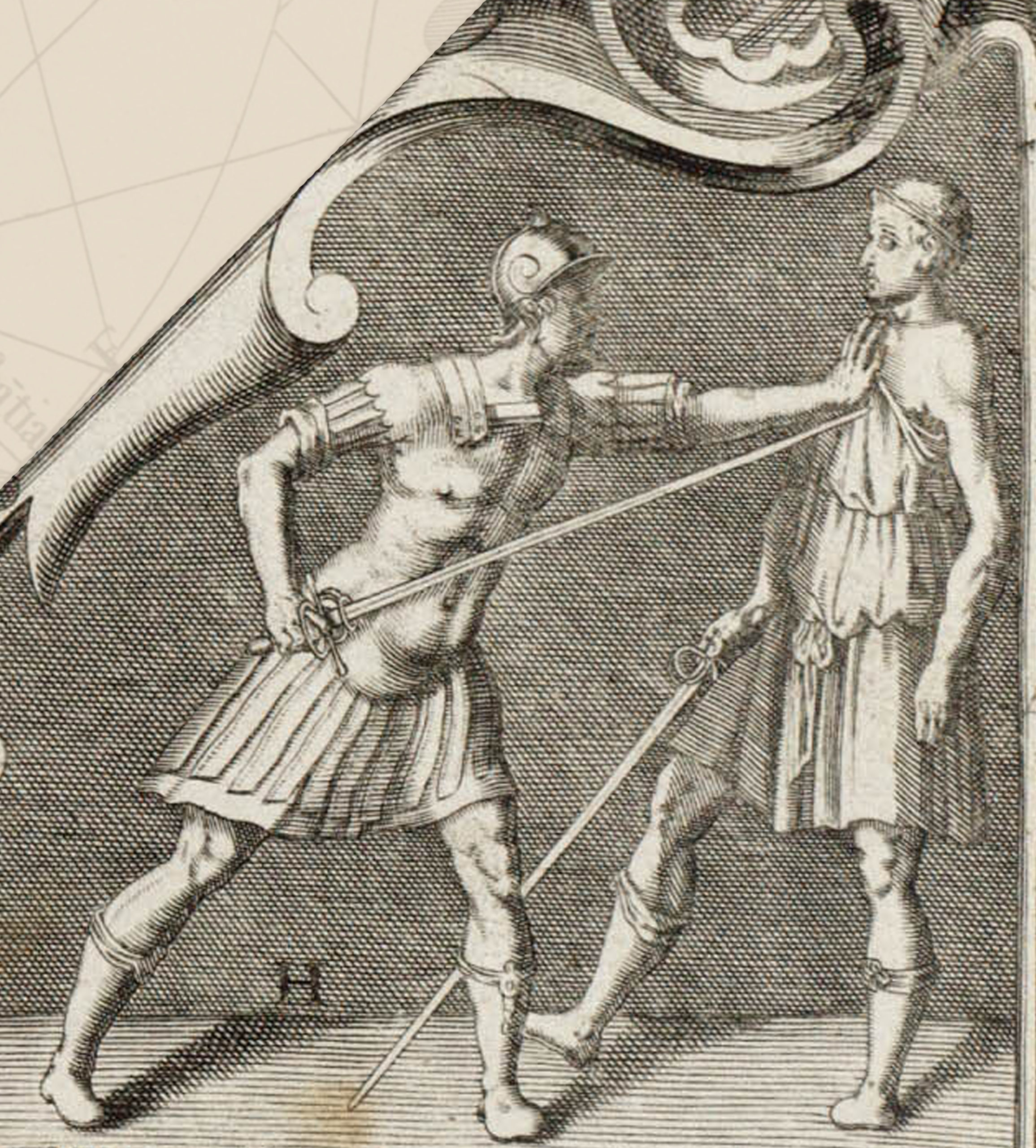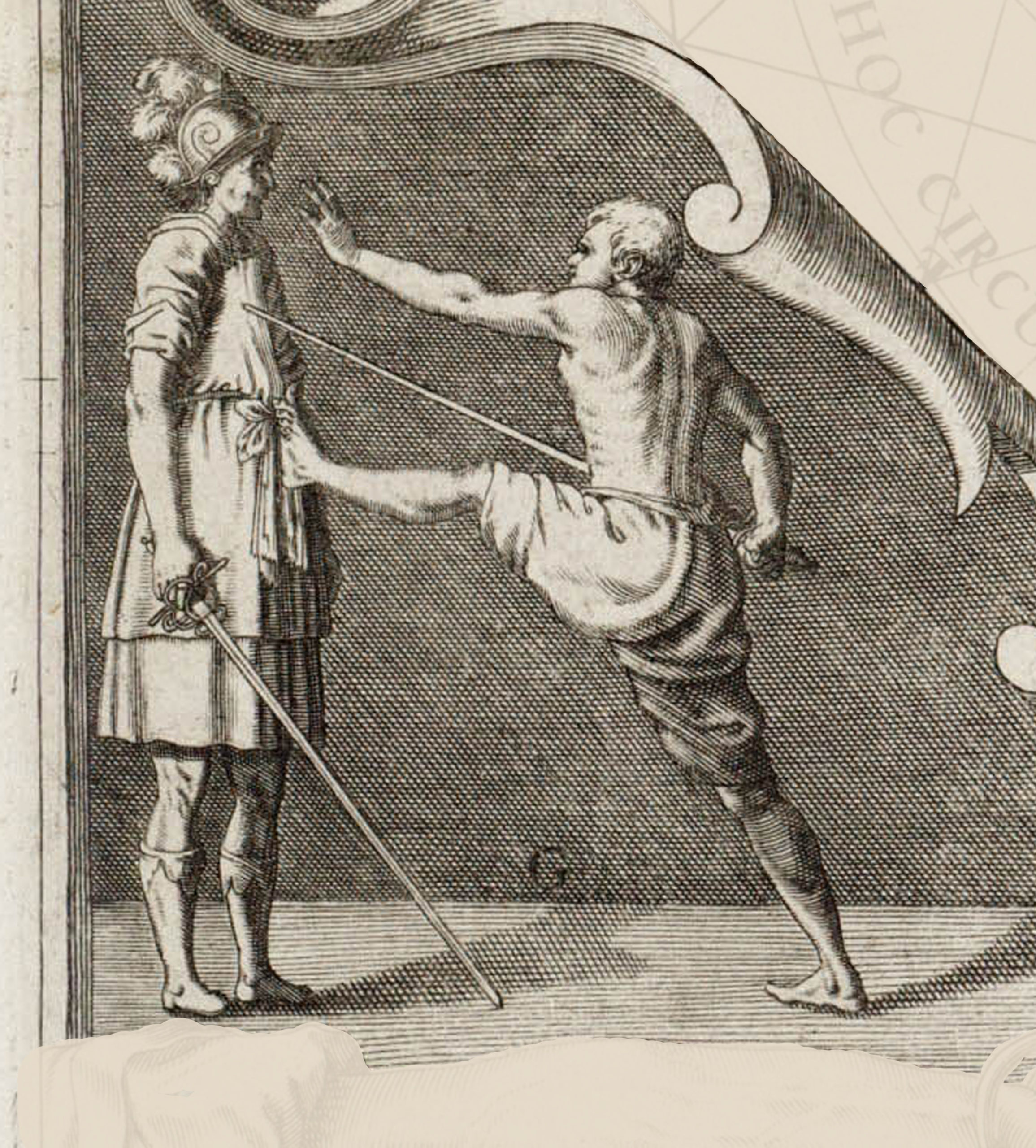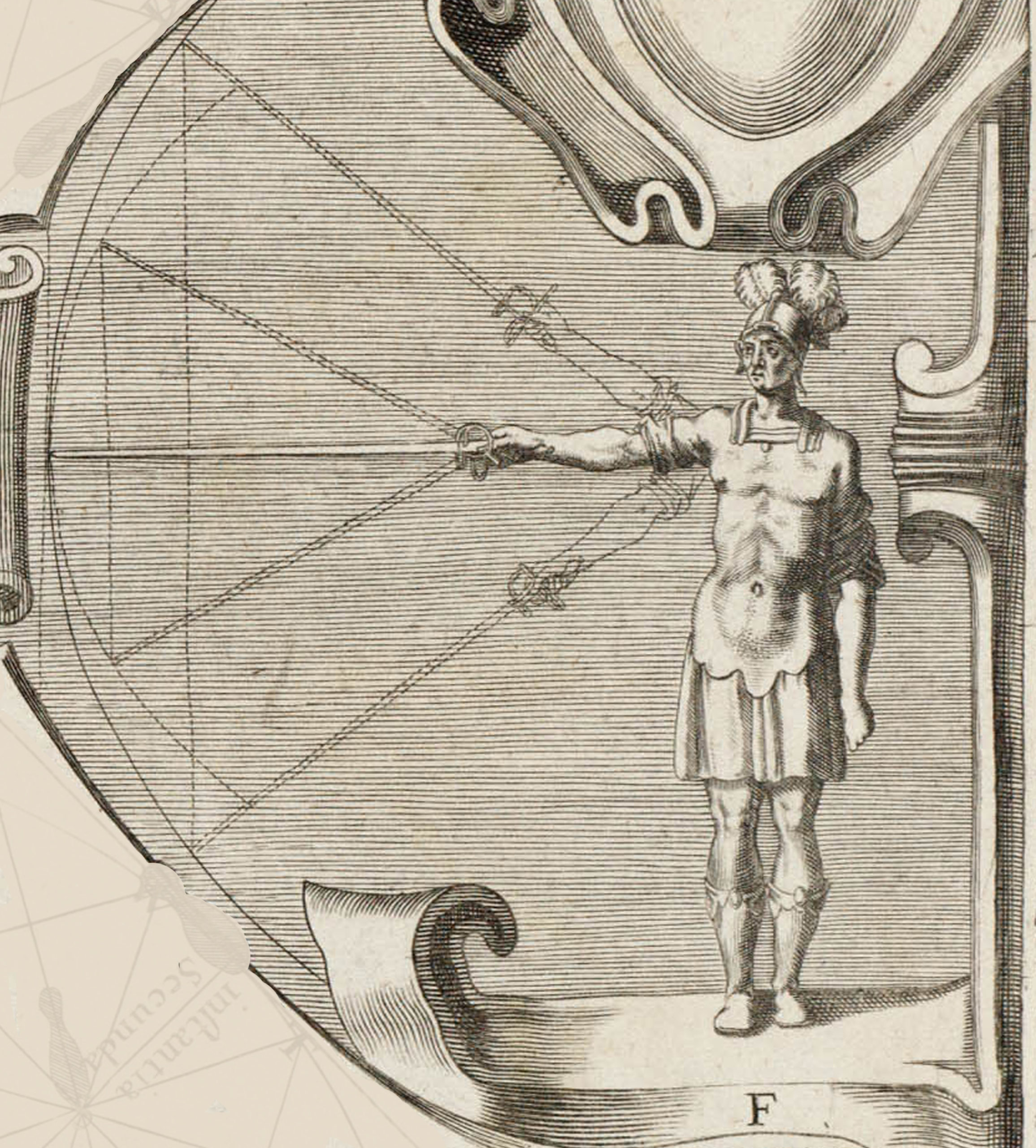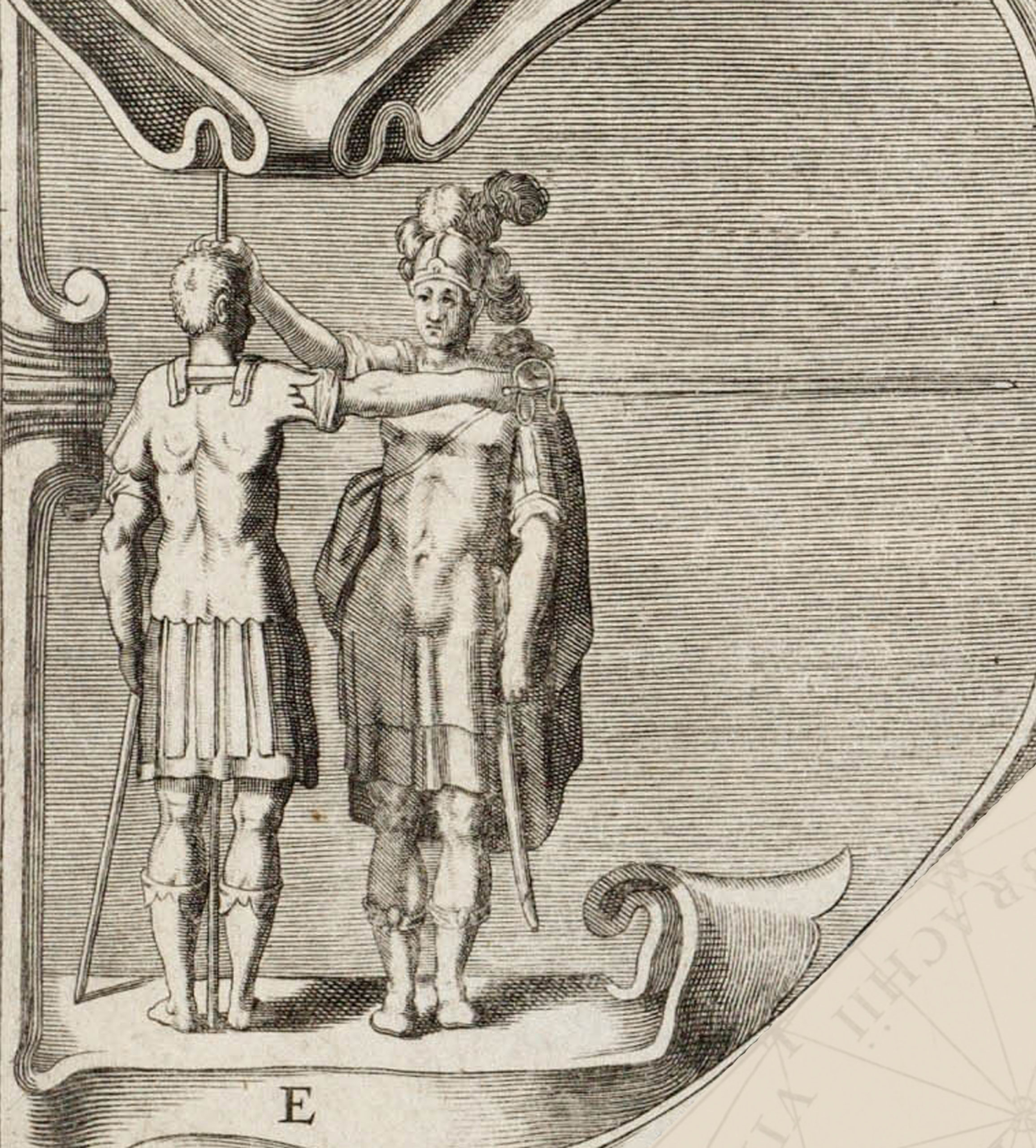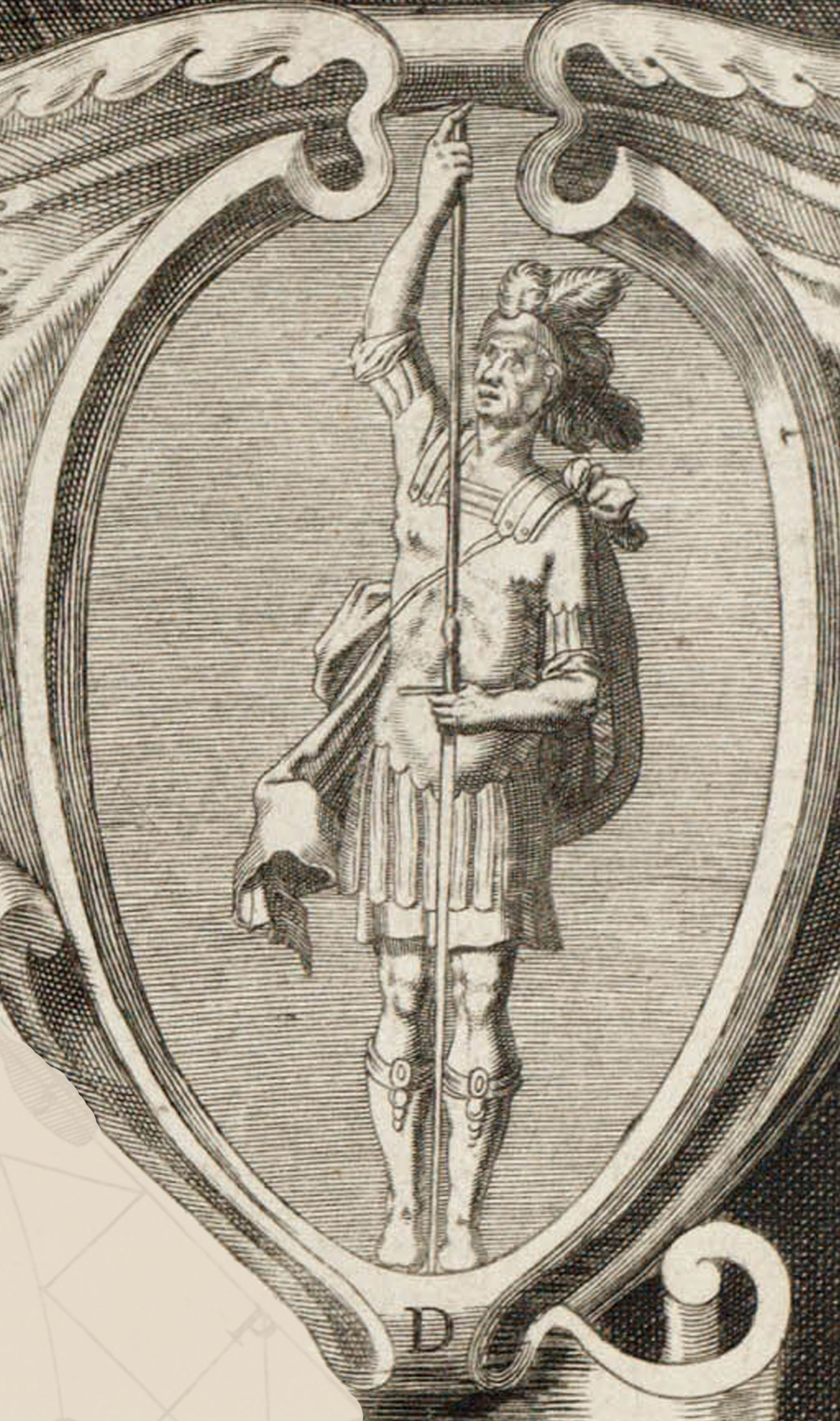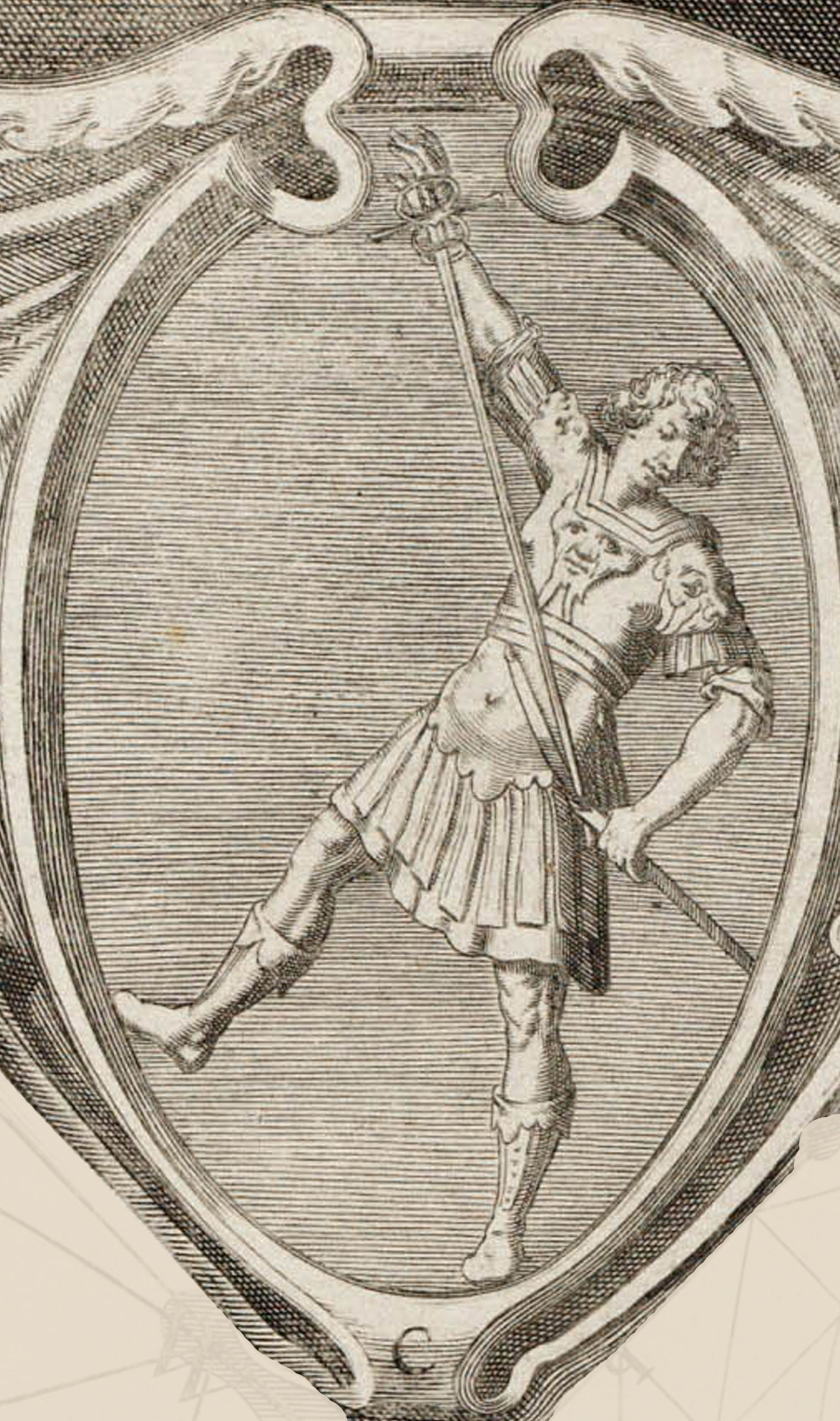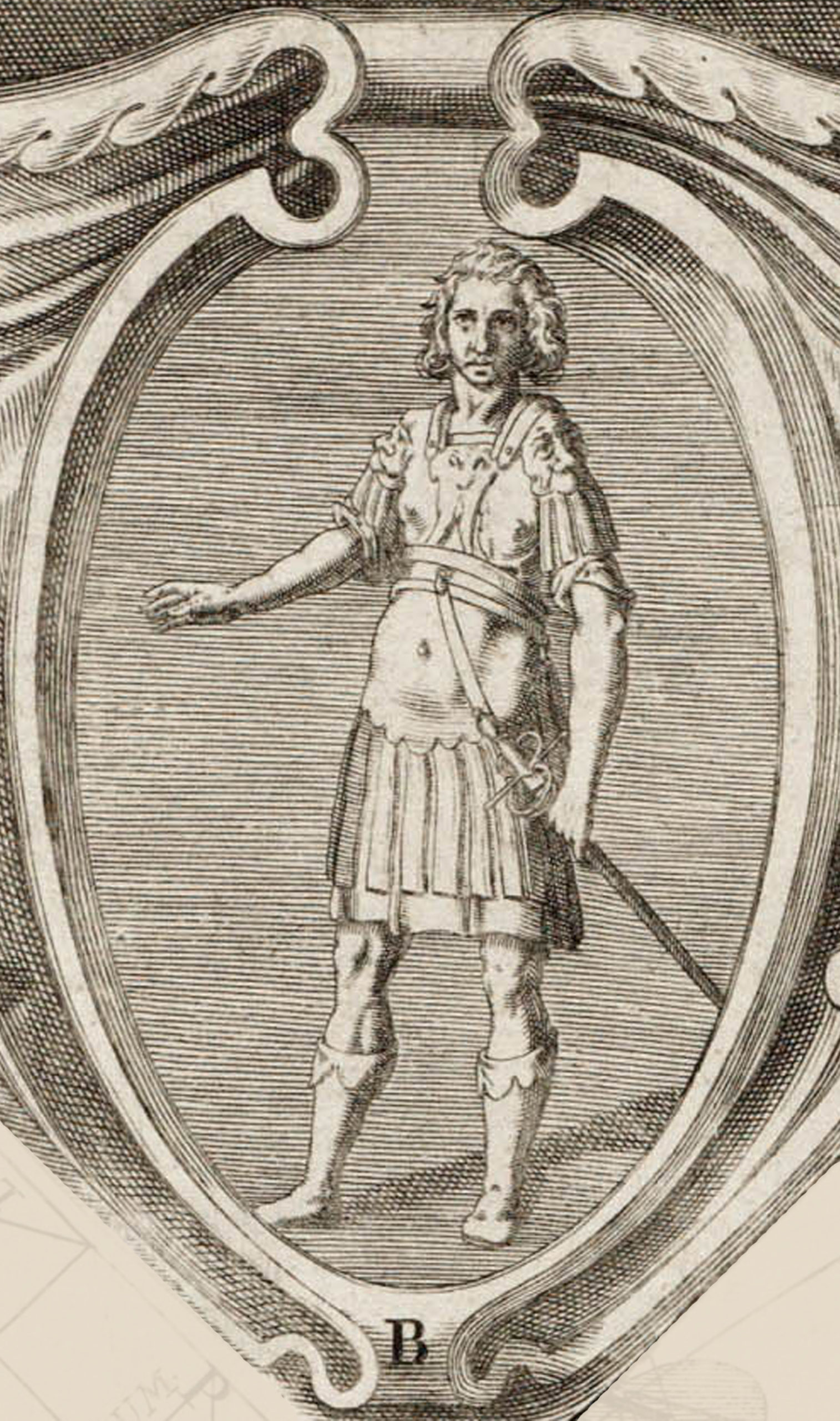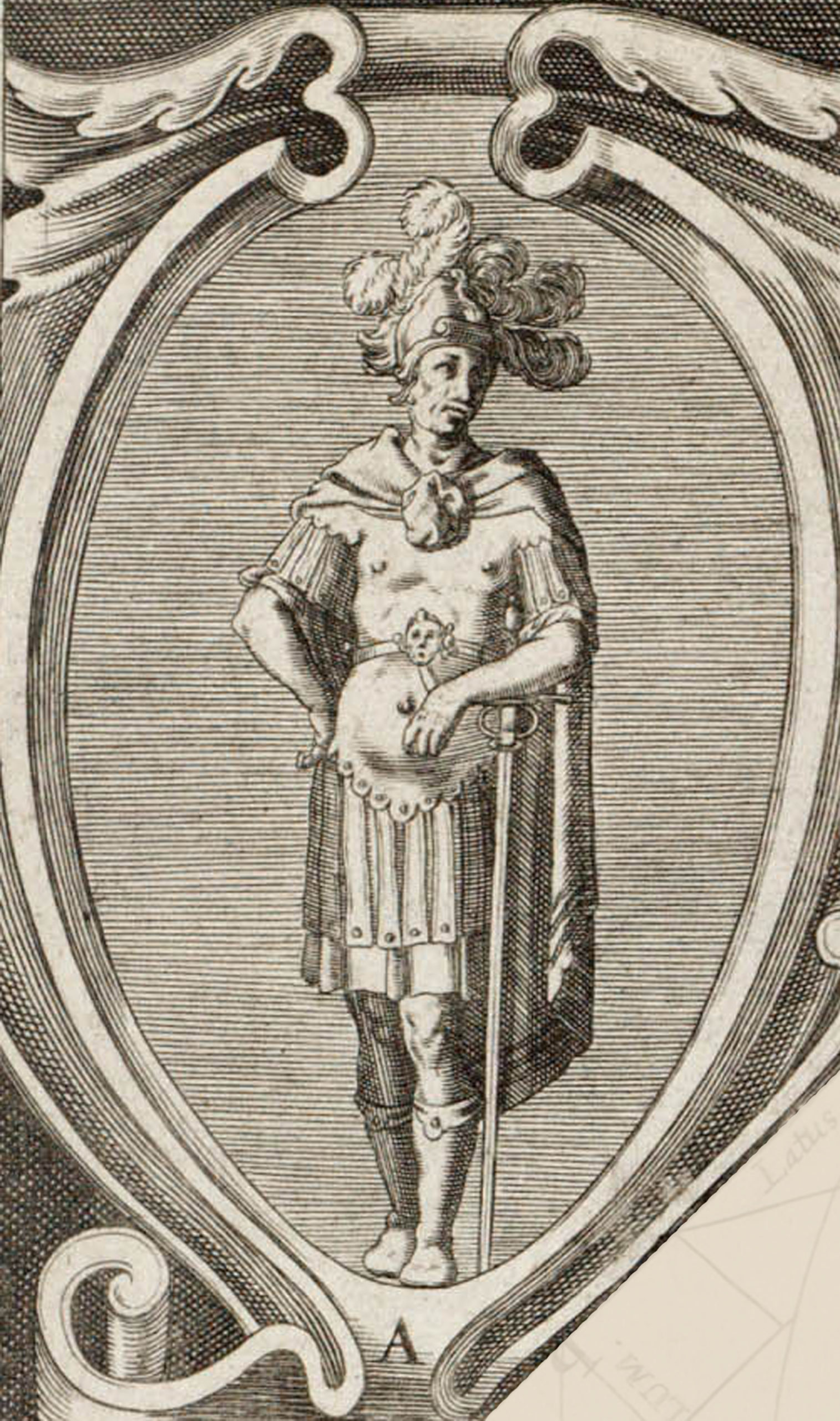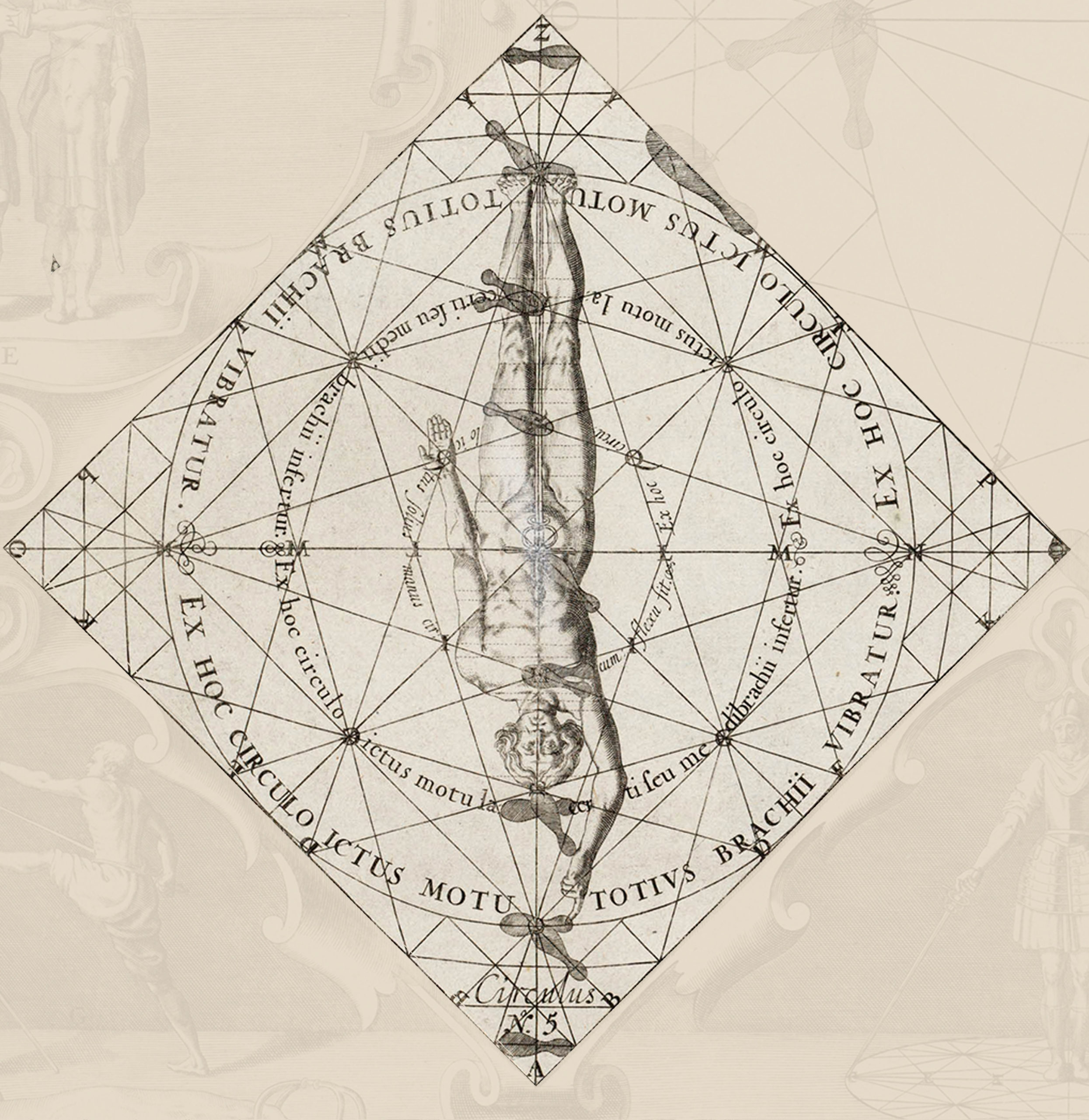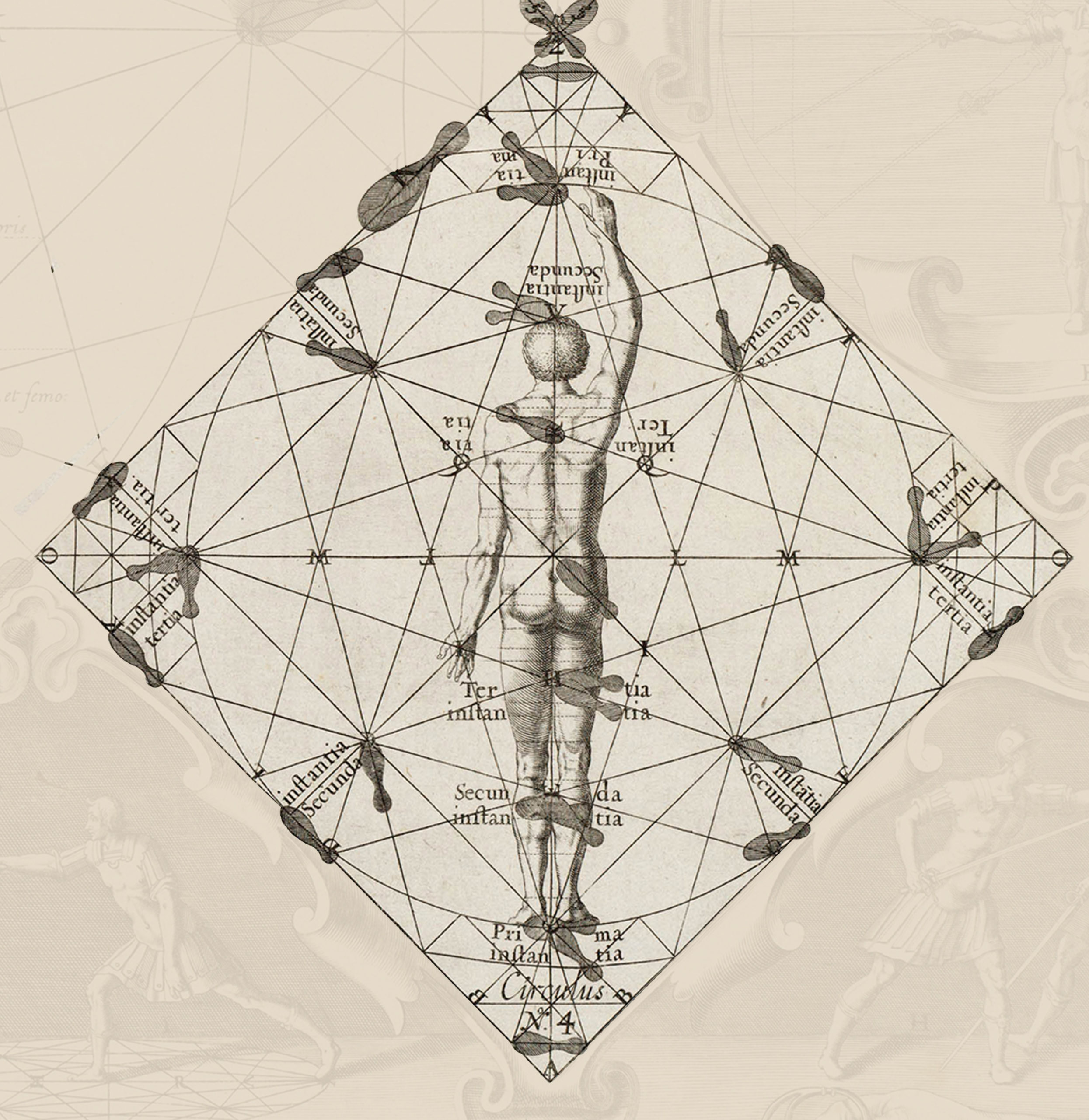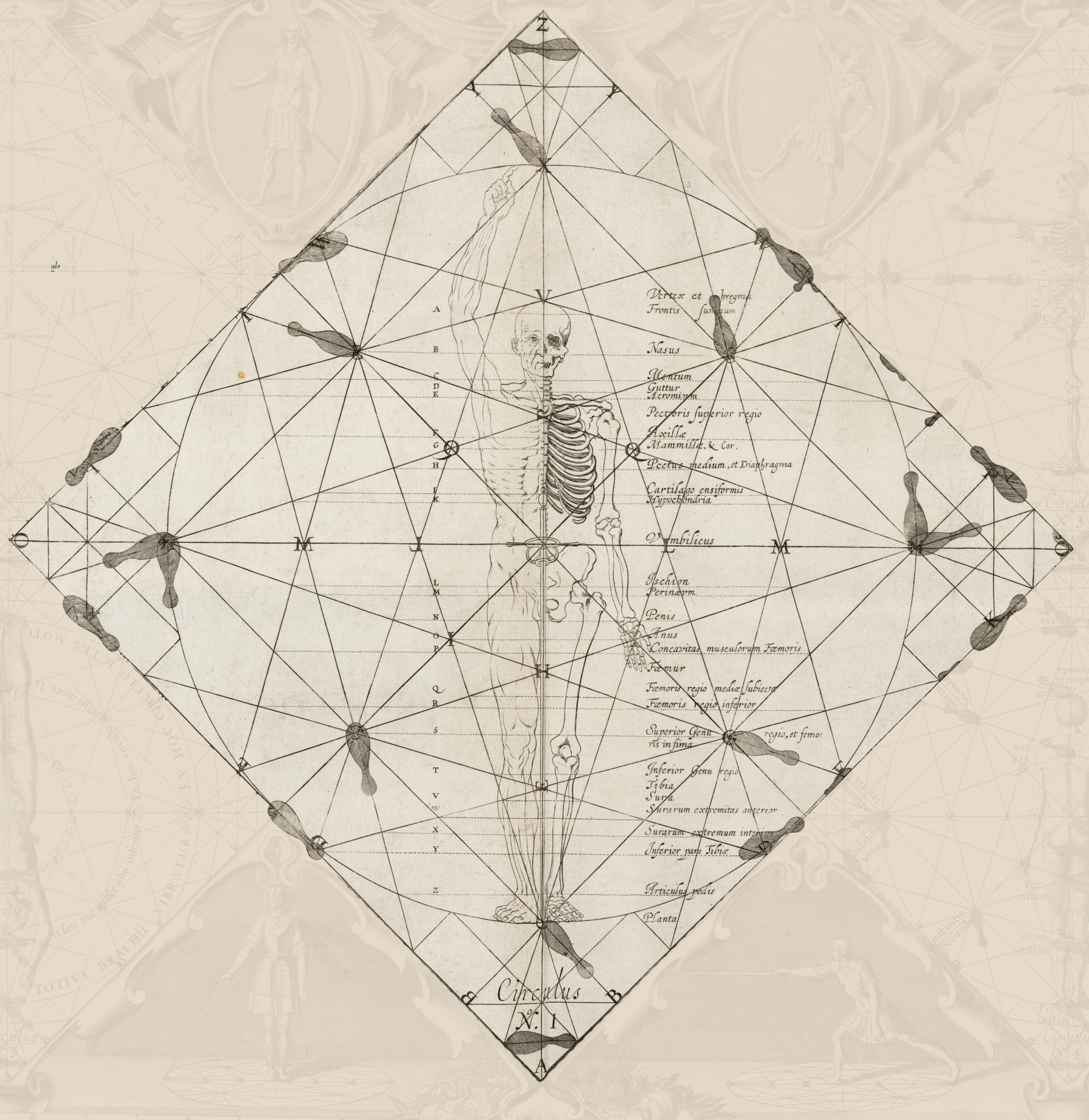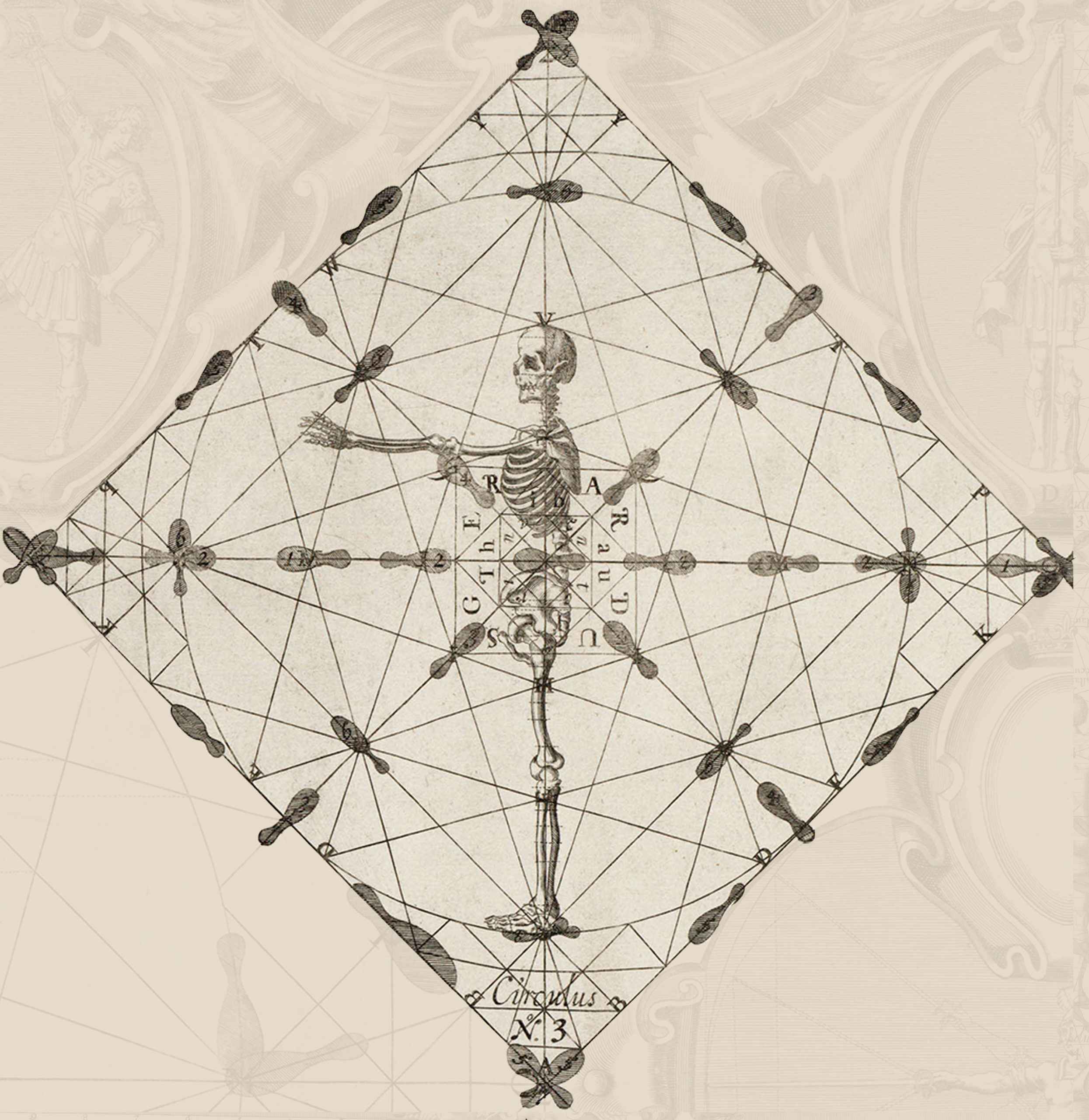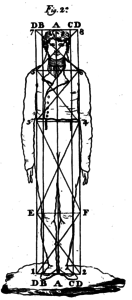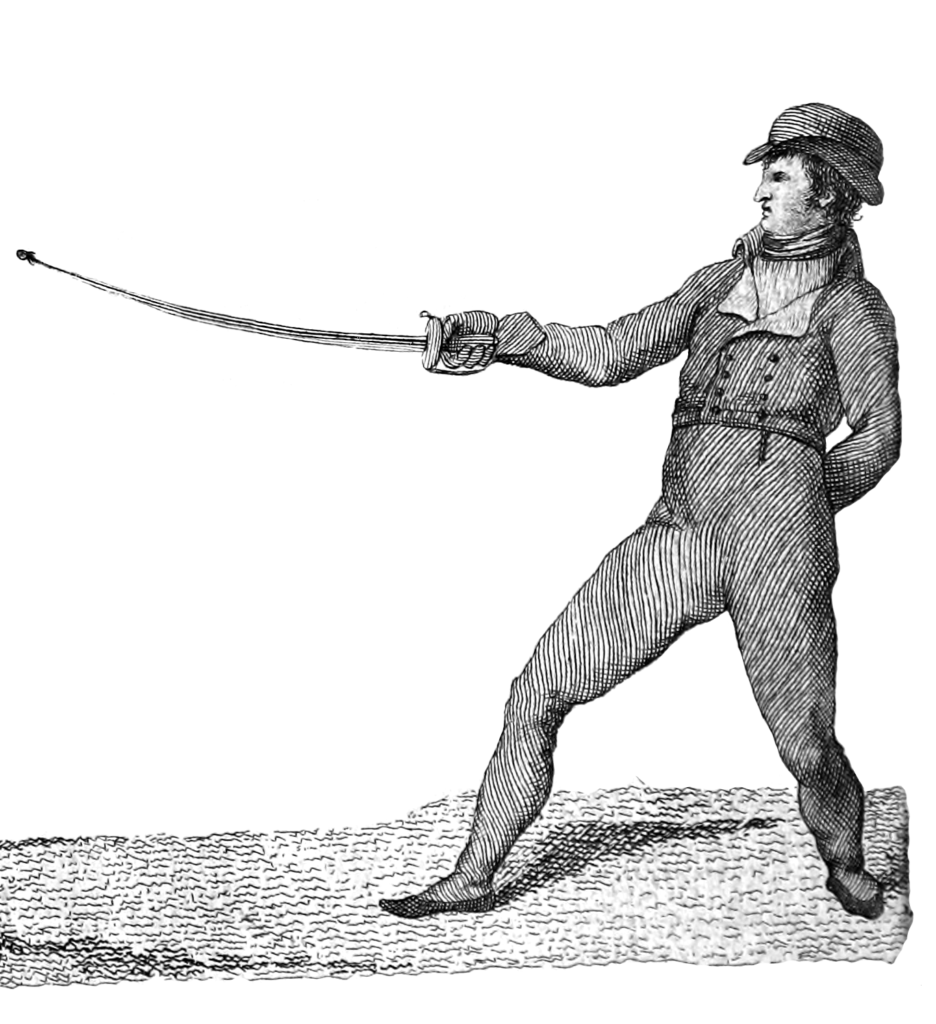287. In the third part of this treatise, I explained with all possible clarity, how and with which removals you oppose and to what and when. This assumed, I will avoid annoying repetitions and begin with the subject matter of this chapter, treating on the offenses you can inflict on the enemy by virtue of the oppositions to the four removals of the first order, or guards.
Offenses in Opposition to the Guard of Fourth
288. I said in paragraph 110 that the guard of fourth is opposed by that of fifth, given by making this guard, and its opposition. In this virtue I say that from fifth, in which the one is opposed, and standing to attack, make a very rapid deep step, leaving the line of the diameter on the right side one third, profiling well, and, at the same time as the step, raise the point of the sabre, directing it to the chest of your enemy at the height of the superior plane, executing a thrust of first with the hand in third, and join the weapons to make opposition to the inside, carrying the head on the right shoulder.
289. Under the circumstances stated, of the opposition of fifth to the guard of fourth, you can, without leaving the line, free the point to the outside below the hand, to the height of the shoulders, and making a deep step, inflict to your contrary a thrust of third, moving square.
Offenses in Opposition to the Guard of Third
290. The guard of third is opposed by that of sixth (§ 111), from which, leave the line on the left side one third with a deep step and, moving square, execute with union of weapons, a thrust of third to the origin of the arm, below the guard, to the superior plane.
291. From the guard of sixth, and without varying the position of third, free your sabre to the inside and, profiling, lower the guard to the superior plane and execute a thrust of second between the weapons.
Offenses in Opposition to the Guard of Fifth
292. The guard of fifth is opposed by that of fourth (§ 113) and from this, you will leave the line to the left side, move square with a deep step, and turn the hand in third. Execute below the arm of the enemy a thrust of second with weapons joined.
293. From the same guard of fourth, free the point to the outside above the contrary guard, profile, and execute to the line, a thrust of first with the other necessary oppositions.
Offenses in Opposition to the Guard of Sixth
294. The guard of sixth is opposed by that of third (§ 112), from which, stepping deeply, leave the line to the right side, profile, and raise the hand up to the superior plane, turning in fourth, execute, taking the middle of the enemy’s sword, a thrust of first without separating the sabres, with opposition to the inside.
295.From the same guard of third, free the point above to the outside, going up to the superior plane, and move square, executing on the line, a thrust of second.
296. All the free thrusts of this present chapter admit, for the greatest security, leaving the line one half third to the side of the execution.
Offenses Carrying from One Removal to Another
297. In chapter 2 of part 3 is explained the mechanism of carrying from one removal to another. The offenses that can be inflicted by virtue of this operation are the same as are described with union of weapons in the paragraphs of this chapter, differing only in that, beginning by taking a guard, they take the opposing sword to the point where a straight line can make the offense. For example, if you try to offend by carrying the contrary sabre from fourth to fifth, you will walk the two sabres until, having made a half revolution, it arrives at your own line of the diameter with the point directed to the body of your opponent so that, with only a deep step, you execute in the low line, a thrust of second. Comparing this with that of paragraph 292 will make its identity known, and so with the others.

